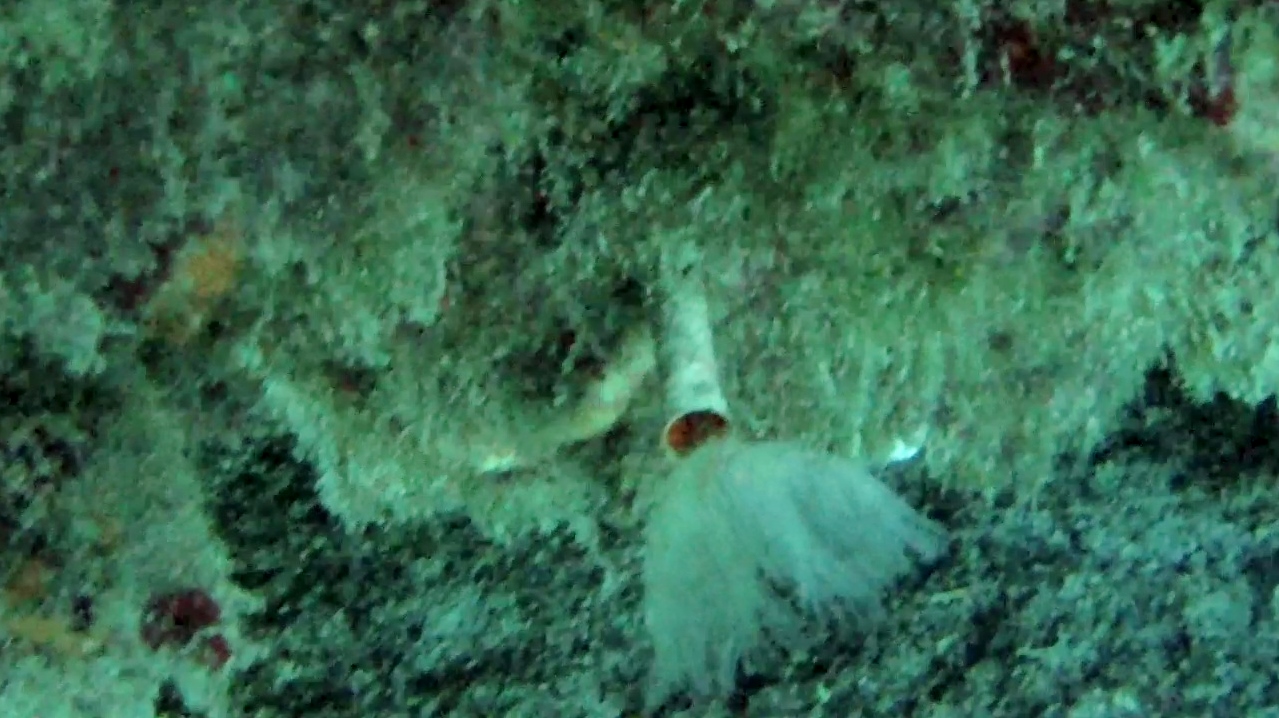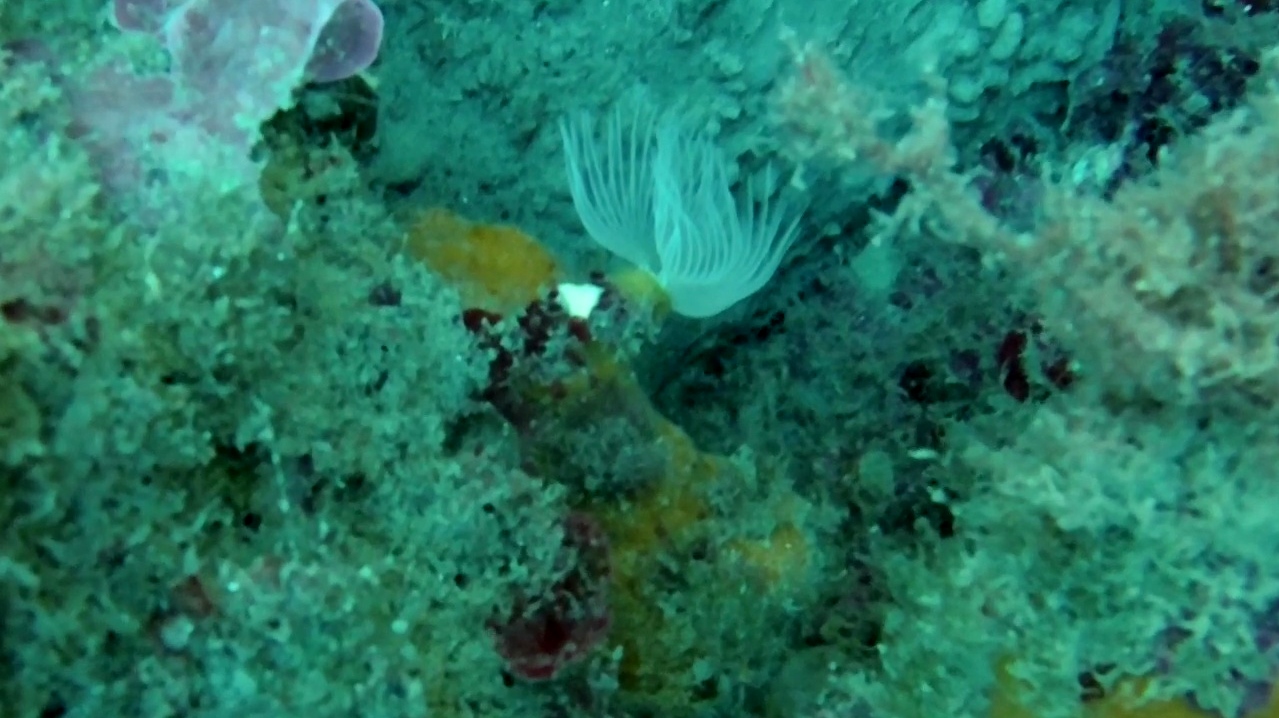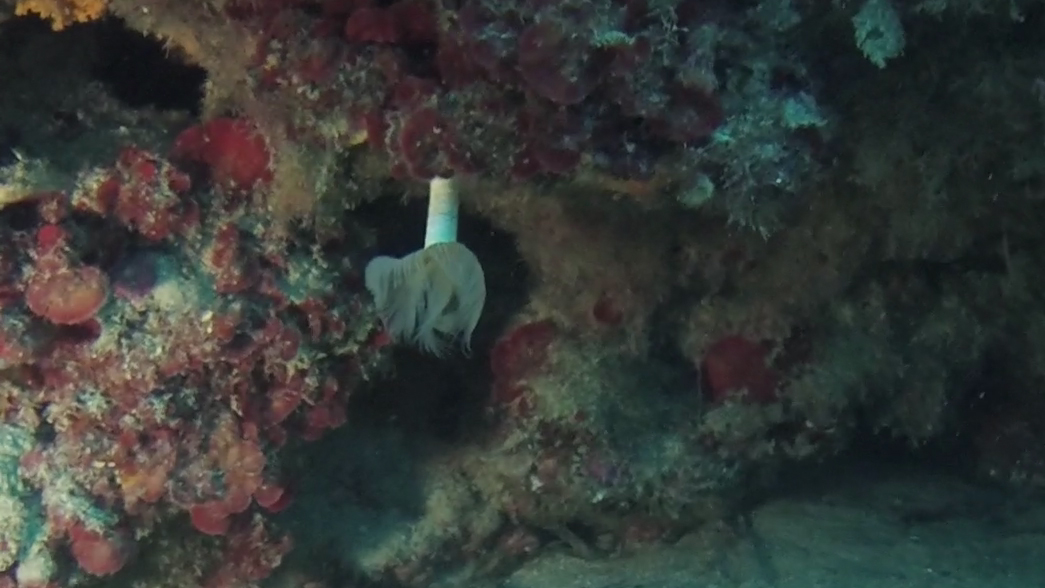Serpulidae - Hydroides Dianthus
Serpulidae Hydroides Dianthus serpulis dianthus is a Worm that belongs to the philell of the Anellids, and to the class of the Sedentary Polychaete and to the order of the Sabellids and to the genus of the Serpulids. Serpulidae Hydroides Dianthus serpulis Anellids Polychaete intotheblue.it

The term Vermi is generic and used in our analysis as a catalog of convenience to indicate a great variety of organisms that look similar with an elongated and flexible body. We will subdivide the few species of worms we divers known in five philums:
annelid, flatworms, nemertini, sipunculudi, echiuridi.
The annelids are worms with a segmented body formed by many rings that are identical in all and in sequence one attached to the other. Several will be the first and last of the “row”. Usually each segment has specific chitinous bristles suitable for movement, and the first and last tentacles or cirrus or papillae for vital functions other than motion. In the philell of the annelids we will examine only two classes of polychaetes. Of the organisms that are part of these classes we will examine only, (and we will broadly do) the form of movement and the walking system in the territory. From this analysis we will differentiate the class of wandering polychaetes, free and capable of movement in the territory, from the class of sedentary polychaetes, prisoners in structures created by themselves and with limited movement within the confines of the structure itself.

Sabellids are sedentary polychaetes among the most sought after by divers for their beauty and majesty. Their peculiar characteristic is that of secreting a fibrous substance that creates, around the animal, a flexible tube inside which, with appropriate mute, he lives the whole life. In detail, the tube is soft, fixed at the base to the substrate and open at the top. The animal inside is free and, with the body equipped with several peduncles, determines the movement. The corolla, with one or more spirals of multi-colored feathers, has at the same time the function of respiratory system and network for the active capture of plankton. To the genus of the serproids hydroides belong single individuals always united in colonies that form tangles of calcareous tubules with circular or triangular section, fixed on hard substrates of any kind. The serpulid hydroides dianthus lives in circular-section tubes.

https://www.biologiamarina.org/serpulide-hydroides-dianthus
